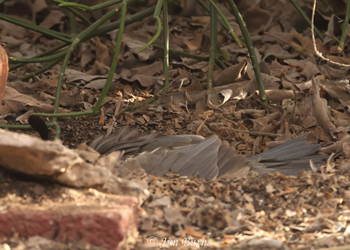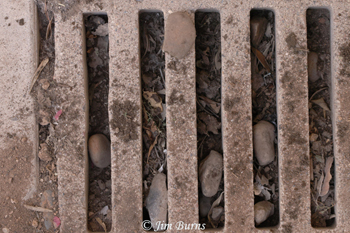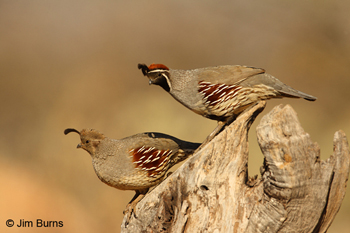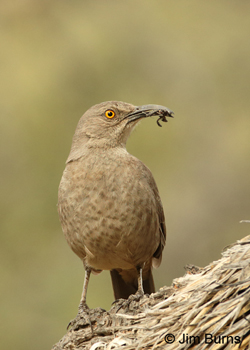|
|
Let’s deal with the photo on the left first as it should be the easiest because . . . well, because it actually has a bird in it! Once you figure out what bird it is, its circumstances might become obvious because it’s doing something this species, common here in the Southwest, is observed doing quite often. Comparing the size of the body to the surrounding leaves, which are from a Texas Olive, it would appear to be a bird of medium size. The plumage is predominantly light brown to gray, and the obvious tail to the right side of the photo looks relatively long. You might also see the white feathering along the wing edges.
With the clues I’ve given in the previous paragraph, you should have narrowed the field quite a bit. It’s too bad, isn’t it, that we can’t see the bird’s head. The head seems to be hidden behind rocks or bricks, and the entire body seems partially buried in the leaves. Have you noticed the single short, wide, curved feather above the large rock near the left edge of the frame, the black one? Yes, that is a feather lying in the leaves, or is it sticking up from the bird’s hidden head. This is your best clue to the mystery.
Sure, now you’ve got it. Gambel’s Quail. But why has it buried itself in a pile of leaves? The only bird I’ve ever seen do that was a Wilson’s Snipe. Imagine how camouflaged a snipe would be buried in a pile of autumn leaves, but a quail wouldn’t bury itself like that, right? I’m not just using a bad photo to fool you. It is an illustration of the most prolonged and industrious dust bath I’ve ever seen birds take.
This dust bathing male Gambel’s Quail is deep into the dirt under only a very thin layer of leaves on the ground under the tree. The interesting thing to me was that several Gambel’s of both sexes used the exact same spot, one after the other, to bathe, and by the time they had all finished, what began as a slight depression was virtually a hole in the ground fully eight inches deep in the middle when I went outside to measure it.
Many species dust regularly, filling their feathers with fine dirt before shaking it out and preening. None in the grouse family ever bathe in water. They make their “dust tub” by scratching with their feet and rotating their bodies, then spraying the dirt onto their plumage. It is thought that this serves two purposes: by removing moisture and preen oil it keeps air in the feathers for good overnight insulation; and it removes lice and keratin depleting bacteria. Although I’ve often seen quail dust bathing, I had never observed an entire covey engaging in this together or creating such a deep depression, and I had never observed it late in the day. We watched this spectacle while eating dinner. Now it makes sense that this may be a nightly ritual for a covey preparing to go to roost.
If you think something is missing from the second photo, you are correct. There’s no bird in it! But this photo too illustrates physical evidence of common behavior of another of your avian neighbors which you may not have directly observed. Every morning as my wife or I go out the door to retrieve the newspaper, we grab a push broom. The photo tells you why. It’s because every morning, and evening too, a pair of our neighborhood birds has scattered all the dirt from the cracks between the slabs of the driveway and sidewalk out onto the concrete, creating a mess.
It took us awhile to figure out what was happening, but in time birders become much more aware of the activity of the birds that live around them than those out in the desert. This photo shows a concrete grating which runs along the end of our driveway to drain rainwater before it floods the backyard. Even more than the driveway itself and the sidewalk, this drain is a favored foraging spot for . . . our Curved-billed Thrashers.
If you have Curve-billeds around, take some time to watch them. That massive, decurved bill is a perfectly designed evolutionary digging and probing tool for a species that gleans insects and their grubs from the interstices of . . . well, just about anything—sidewalks, tree bark, bare dirt packed next to brick walls, leaf litter, sand.
Curve-billeds don’t scratch with their feet like towhees and sparrows. They grab and fling debris with that bill, then rake and scratch with it in the ground below. Like the quail that visibly spray dust all around as they bathe, the thrashers are messy as they forage, throwing leaves and cactus joints as much as a foot out of their way in the constant search for food. After clearing a patch down to bare earth they will then make holes up to two inches deep as they dig and probe in the underlying dirt.
The message here is that there may be more going on in your yard than you think, more than you have actually observed, and watching for its signs can only add to your wonder and enjoyment of the bird around us.
|
|



